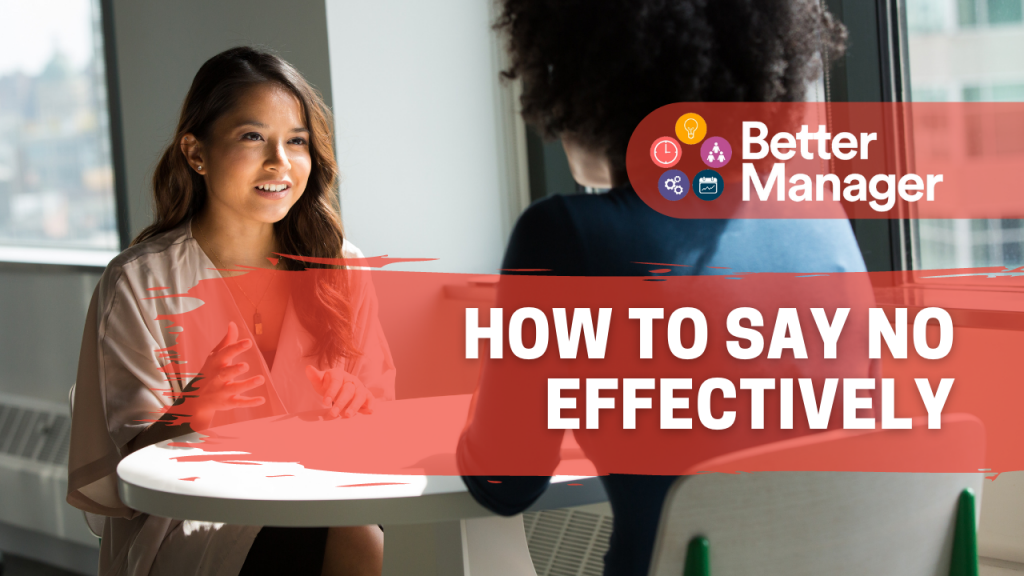How to say no in an assertive manner is a life skill that is often overlooked. Often, we become so accustomed to saying yes to things that we lose our ability to say no. Being assertive comes with its inherent challenge. That challenge is how to say no in a way that both gets you what you want and doesn’t hurt your clients, coworkers, or business relationships.
How to say no in assertive terms demands that certain boundaries be set and maintained to maintain productivity. The required boundaries may relate to behavior, health or safety, or the environment.
It is essential to remind ourselves that the things that are non-negotiable within our lives must always be the first ones to be mentioned. There are other considerations that we should weigh heavily against. They include its effects on others and how the situation has been worsened by not speaking up or making some concession to the other party in question. Therefore, it is necessary to find the right way of responding to every situation in which we find ourselves.
Most people don’t want to be told no, especially at the beginning of a work/business relationship. They expect to be able to hear yes to everything. When it comes to situations such as the workplace, it isn’t straightforward to find the right way to respond. At the same time, there are times when it is not possible to find the right way to respond. The key to working effectively in this environment is to strike a delicate balance between being assertive without being too pushy and being assertive but being courteous with your coworkers. That can often mean saying what you want but working within the boundaries of the company’s rules. However, there is no reason why an employer has to follow exactly what your direct manager says. It is perfectly acceptable for them to consider the opinions of other employees, as long as they remain within their comfort zone.
When to say no effectively is very much connected to asking questions. You need to ask questions and learn more about the person that is doing the task. For example, if you are working on a large project, you need to learn all the details and the subtleties that you can get from the person doing the task. That is so that you will know whether or not you are making the right call.
When talking with someone, be sure that they understand what you are saying before saying it. Assertiveness is not about opening up without being prompted. You need to earn the right to say no at the right time. You do this by being clear about your needs and having a good idea of your client’s needs. When you can clearly state your clients’ non-negotiables, you will give them the right reason to do what needs to be done and not what you think they should be doing.
It is a common mistake to say yes to everything that is said. People are not computers, and if you expect them to respond quickly, you will disappoint them. There are times when you have to make a decision and stick with it no matter how much the other person is resisting it. It would be best if you were assertive in the face of opposition, or it could very well end up making you look weak in front of your client or boss.
Often, it is hard saying no out of fear, and there are many reasons why a person might be afraid to say something. Fear is a common human emotion that can prevent people from doing what they need to do. That can lead to problems down the road when the person is not fully satisfied with whatever they have decided to do. Taking control of your fear and learning how to say no effectively will put you on the right track to achieving your life skill of leading yourself out of fear.
Sometimes, you need to speak your mind. If you feel uncertain about something and aren’t sure how to approach it, sharing your thoughts with a mentor is one option. If he/she agrees with you and supports your stance, you should feel comfortable doing what you want. The key here is to make sure that you remain polite and professional at all times. On the other hand, if you are unsure whether or not you are making a good decision, then avoiding saying anything at all would probably be a better option.
How to say no effectively means knowing how to decline situations that you may find yourself in politely. Instead of automatically accepting an invitation to something just because you were invited, you should consider how you will be received if you accept. Being polite means understanding how others feel when you decline their invitation; it also means being mindful that other people have the right to decline your invitation as well. You will want to know how to say no effectively so that you do not get into a situation where you are being unnecessarily rude. You do not want to be mean and rude and discourage others from doing things that businesses want to be open about.

